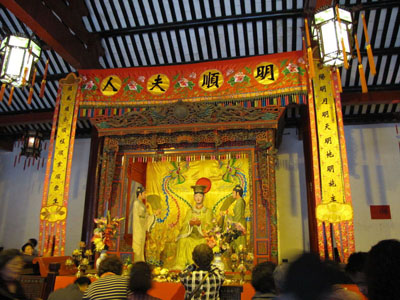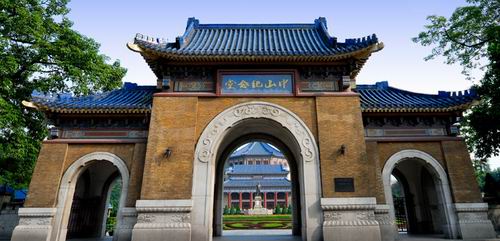The Southern Music has its roots in "wooden fish" and "dragon boat" songs and includes elements of Yangzhou rap. It's so named to distinguish it from Wu Melody.
The Southern Music features strictly antithetical lyrics, unique tonality, and dynamic rhythms. It is often accompanied by musical instruments and contains allegro and interlude. With graceful melody, the Southern Music is immensely popular among intellectuals, artists and the general public, suiting both refined and popular tastes. With stronger musicality that "wooden fish" and "dragon boat" songs, the Southern Music is more often performed on stage as an independent genre.
In its early days, the Southern Music was mainly patronized by intellectuals, and most of the pieces conveyed sentimentality with elegant lyrics and flowing melody, most notably Melancholy Autumn on the Journey by Miao Gen, a scholar of in the reign of Emperor Jiaqing of the Qing Dynasty, and Nocturnal Lament by the magistrate of Shude in the reign of Emperor Guangxu of the Qing Dynasty. Among the numerous Southern Music performers, Bai Jurong, a renowned Cantonese opera performer, is widely recognized as the most skillful in rendering Melancholy Autumn on the Journey.
"Yue'ou", also known as "Jiexin", is a form of combined talking and singing popular in the Pearl River Delta in the 18th century. It was created by Feng Xun and Zhao Ziyong on the basis of the "wooden fish" songs and the southern music. Mainly chanted in Guangzhou dialect, "Yue'ou" can be sung without the accompaniment of a musical instrument or as part of a concerto to the accompaniment of pi-pa, a bamboo flute or Chinese dulcimer. Featuring a melancholy melody and a mild tempo, "Yue'ou" has mostly seven-line lyrics, though ten-line ones are not uncommon. Each line is strictly rhythmic and well-matched level and oblique tones, but there is no strict requirement for rhyming between two lines. Each verse typically ends with an interjection or a pronoun to convey emotions. "Yue'ou" has a largely fixed prelude and is now rarely performed independently; rather, it is used as a melody for Cantonese opera or Cantonese music.
Main extant works include Yue'ou by Zhao Ziyong, which comprises 121 pieces, with Removing the Load on the Mind and Joys of Autumn being the two most famous ones. In 1904, Cecil Clementi, who was to become governor of Hong Kong in 2005, translated some "Yue'ou" lyrics into English while he was the land registrar in New Territories. The translations were published in a book titled "Cantonese Love Songs".
All materials marked with "source: English.gz.gov.cn" on this website (including but not limited to text, photographs, audio and video materials) are the copyrighted property of Guangzhou International (the official website of Guangzhou Municipality). Without prior authorization from Guangzhou International, any media, website, organization or individual shall not transmit, interlink, distribute or republish such materials in any form. Any media and website authorized to republish such materials shall mark them with "source: Guangzhou International (English.gz.gov.cn)". Infringement of these copyrights will result in legal action.




